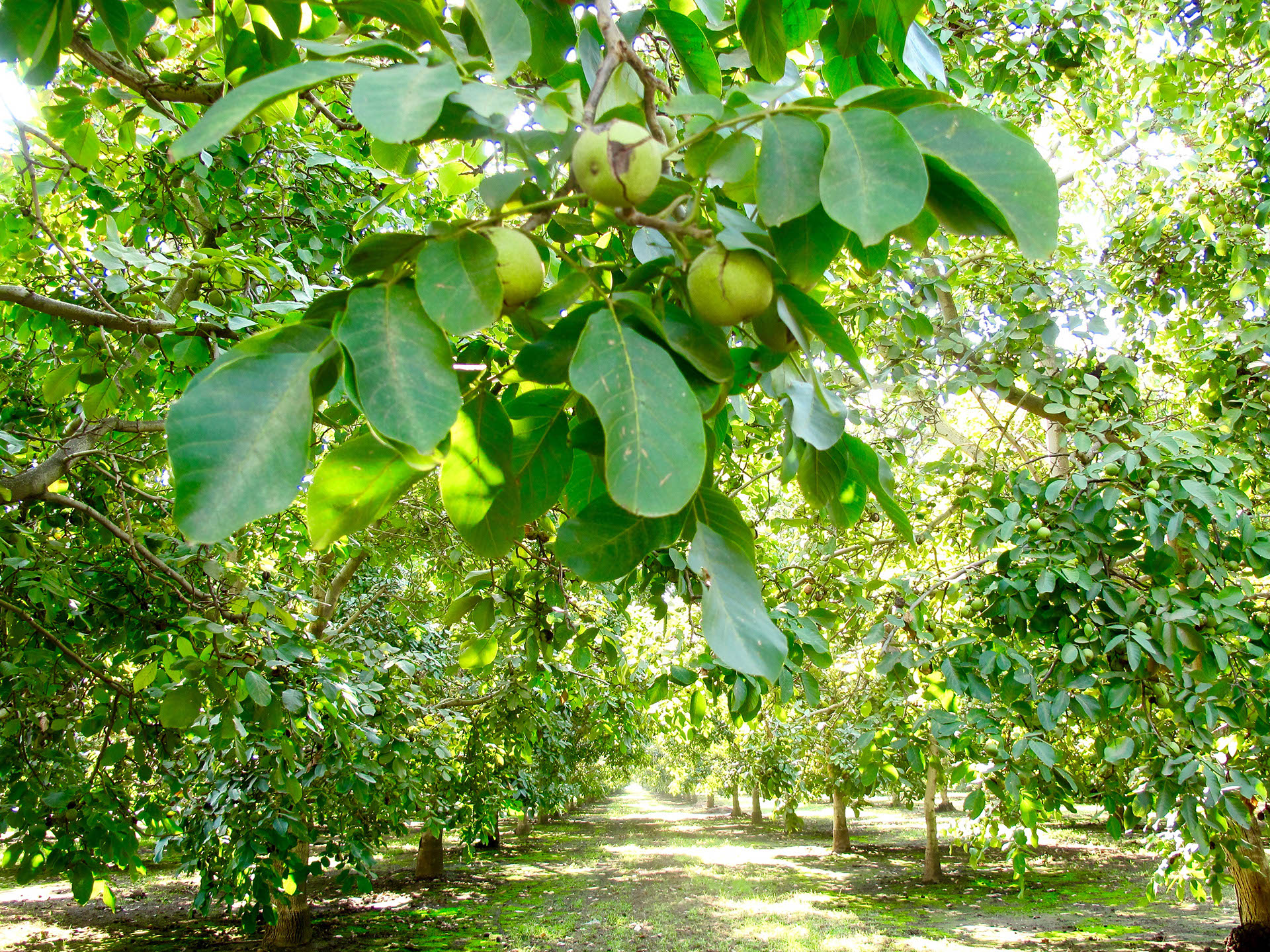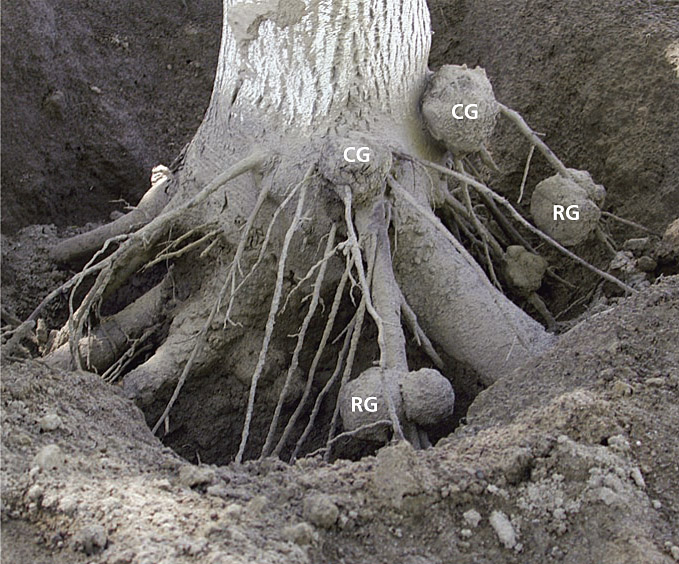
A multi-disciplinary collaboration is underway to develop and deploy walnut rootstocks with resistance to the major soil-borne pathogens, specifically crown gall (Agrobacterium tumefaciens), Phytophthora root/crown rot (Phytophthora spp.), and lesion nematodes (Pratylenchus vulnus).
According to Dr. Ali McClean with the USDA’s Crop Pathology and Genetics Research Unit at UC Davis, a significant proportion of the walnut industry uses either seedling or clonal ‘Paradox’ rootstocks, which is susceptible to disease caused by several soil-borne pathogens.
McClean said since there are limited preplant and post-plant management strategies for these stresses, rootstocks with elevated levels of genetic resistance/tolerance to these pathogens offer the most promising solution to soil-borne threats.

“We have four specific aims,” he said. “The first one is screening wild walnut species and looking for natural resistance to the pathogens. The second thing we wanted to do is take those wild species and cross them with English walnuts, make new hybrids, and then screen those hybrid genotypes to find ones that have resistance to one or more pathogens.”
Once this has been accomplished, researchers scale those up and have them mass produced at nurseries, then test them in the field.
“The end result is that we want to make these disease-resistant rootstocks available to the growers,” McClean said.
Objectives of the Project:
- Generate/exploit a genetically diverse Juglans germplasm collection.
- Identify hybrid Juglans germplasm resistant to key soil-borne pathogens.
- Generate and clonally propagate hybrid disease-resistant genotypes for validation in field trials.
- Deliver disease resistant rootstocks to growers.
Looking for Natural Resistance
McClean said the team has evaluated 11 wild Juglans species and one non-Juglans, the Chinese wingnut (Pterocarya stenoptera), that are available at the USDA-ARS walnut germplasm collection at University of California, Davis for disease resistance.
“We had open-pollination seedlings that were grown under greenhouse conditions from different accessions of all these 11 species. We did some preliminary disease testing and from those 11 species we narrowed it down to one species, J. microcarpa, which is the Texas black walnut,” he added.
According to McClean, the reason they selected this species was because accessions from it drew off resistance to one or more of the tree pathogens.
“So, we decided to use this species to create our hybrid, J. microcarpa with J. regia. We took these selected mother trees that were throwing off the resistant progeny and crossed those with pollen from cultivar ‘Serr,’ which is our English walnut donor,” he said.
Researchers collected nuts from each of those directed crosses, 300 nuts from each cross. They then took the nuts back to the lab and, using tissue culture methods, grew clonal plants in the lab. The team then took those plants to the mist chamber and rooted them, then transferred them to the greenhouse.
“We produced up to 300 clonal plants from each single embryo from hundreds of seeds. From this we got thousands and thousands of plants to grow pathogen resistant for testing under greenhouse conditions,” McClean said.
Through this testing, researchers found their source of resistance and created the hybrids.
Crown Gall Evaluation
The next step was to go through all the hybrids and find the ones that are resistant to crown gall, Phytophthora root/crown rot, and lesion nematodes.
“We started with crown gall disease, which is a major bacterial, soil-borne disease,” McClean said. “Under greenhouse conditions, each plant was stabbed twice in the stem above the crown area with bacterial suspension and the wounds were wrapped with Parafilm. We then evaluated them for disease symptoms at two months post-inoculation.”
Researchers waited one post-dormancy period longer to see if a gall would develop after dormancy.
They found a range of resistance, or lack of, in the genotypes.
“Some proved to be more susceptible and others more resistant. On this outcome, we made a selection on what was to be mass produced for field testing,” McClean said.

Phytophthora Evaluation
McClean said the research for Phytophthora root/crown rot evaluation was about the same as for crown gall.
“Again, we did testing on the hybrids to find the ones that were most resistant. We also did this under greenhouse conditions,” he added.
In the greenhouse, 10 seedlings or clonal saplings of desired genotypes were transplanted into tubs. Eight of the 10 plants were inoculated with P. citricola or P. cinnamoni, for crown rot and root rot symptoms.
Starting one week after inoculation, all plants were subjected to bi-weekly 48-hour flooding episodes, McClean explained.
From the first crop, six out of 232 clonal hybrids were resistant to Phytophthora, seven out of 260 for the second crop, and two out of 35 for the third crop.
“So, we have 15 that were resistant to Phytophthora in greenhouse testing, and these are the ones we want to test under field conditions,” McClean said.
Nematode Evaluation
“We tested the hybrids for nematode resistance,” he added. “We looked at resistance in this way: looking at the nematode population, if you have high nematode population, that would indicate a susceptible climate. If you have low nematode population, then that genotype won’t support very high nematode numbers and you can consider that resistant. We also consider tolerance to how the plants responded to the presence of the nematodes.”
Like the Phytophthora and crown gall testing, each nematode testing plant was inoculated. This time the plants were inoculated with field soil containing vermiform stages of P. vulnus or M. incognita.
The testing for nematodes took more than two growing seasons to determine hybrid resistance or susceptibility.
Roots prone to nematode infection were collected from each candidate tree after two growing seasons, and submitted to mist chamber nematode extraction, enumeration and statistical analysis, according to study reports.
Six clonal copies of each of the members of the mapping population are undergoing evaluation in the field, with resistant and susceptible results being determined.
Field Testing
Through the research, the team has found some hybrids that are resistant to crown gall, Phytophthora, and nematodes, according to McClean.
“Except for nematodes, all the other testing was done under greenhouse conditions,” he said. “The next step is to scale this up to do actual field testing.”
With help from Sierra Gold Nurseries, the research team has four clonal genotypes that are currently out in the field in five different counties, and four other genotypes ready for the field.
“Working with Sierra Gold, we have another 25 hybrids that have resistance to either crown gall, Phytophthora or lesion nematodes,” he added. “These went out into the field last year, so we currently have about 2,000 plants out there that will be ready to go into field trials in 2020-21.”















